Do you have a question about the Sony HT-DDW670 and is the answer not in the manual?
Explains how the receiver's area code is indicated and its impact on operation.
Lists components that can be connected to the receiver and their corresponding connection pages.
Details the audio and digital cords needed for component connection.
Step-by-step guide for connecting devices using digital audio output.
Step-by-step guide for connecting devices using analog audio output.
Instructions on how to connect the AM loop antenna and FM wire antenna.
Guides on connecting the 5.1 channel speaker system to the receiver.
Provides instructions for mounting front and surround speakers securely on a wall.
Details how to connect the receiver to a wall outlet.
Outlines the procedure to initialize the receiver and reset settings to factory defaults.
Explains how to set speaker distances and positions in the SET UP menu.
Guides on using the test tone to adjust speaker levels and balance for optimal sound.
Explains how to select the audio source component for playback through the receiver.
Guides on how to tune into and listen to FM and AM radio broadcasts using the receiver.
Details the automatic process to store available FM and FM RDS stations alphabetically.
Instructions on how to manually save frequently listened to FM or AM stations.
Explains how to set the receiver to output sound using only the front speakers and subwoofer.
Introduces the Auto Format Direct (A.F.D.) mode for selecting desired decoding modes.
Describes the receiver's automatic detection and decoding of various audio signal types.
Details how to decode 2-channel audio sources into multi-channel formats using Pro Logic modes.
Explains how to choose pre-programmed sound fields to enhance the listening experience.
Guides on selecting input modes for digital audio sources like coaxial and optical.
Explains how to adjust sound fields using the LEVEL menu for personalized listening.
Provides instructions for adjusting bass and treble levels for the front speakers.
Describes how to use the CUSTOMIZE menu for various receiver settings like A.V. SYNC.
Instructions on how to assign custom names to preset stations and input sources.
Explains how to set the receiver to automatically turn off after a specified time.
Covers basic remote usage, including battery insertion and pointing at the sensor.
Provides a detailed breakdown of the remote control's buttons and their functions.
Allows reassigning input buttons to match system components, like assigning DVD to CD player.
Covers safety, power sources, heat, placement, operation, and cleaning guidelines for the receiver.
Addresses common issues when the remote control fails to operate the receiver.
Explains common error messages displayed by the receiver and their solutions.
Details power output and total harmonic distortion for different area codes.
Lists power output specifications for various speakers across different area codes.
Provides tuning range, antenna, and terminal specifications for the FM tuner.
Lists tuning range, antenna, and intermediate frequency for the AM tuner.
Outlines power requirements and power consumption for different area codes.
Details dimensions, enclosure type, impedance, and mass for various speaker models.
Lists all items included in the product package.
Explains how to use the page to find button locations and their corresponding reference pages.
Explains how the receiver's area code is indicated and its impact on operation.
Lists components that can be connected to the receiver and their corresponding connection pages.
Details the audio and digital cords needed for component connection.
Step-by-step guide for connecting devices using digital audio output.
Step-by-step guide for connecting devices using analog audio output.
Instructions on how to connect the AM loop antenna and FM wire antenna.
Guides on connecting the 5.1 channel speaker system to the receiver.
Provides instructions for mounting front and surround speakers securely on a wall.
Details how to connect the receiver to a wall outlet.
Outlines the procedure to initialize the receiver and reset settings to factory defaults.
Explains how to set speaker distances and positions in the SET UP menu.
Guides on using the test tone to adjust speaker levels and balance for optimal sound.
Explains how to select the audio source component for playback through the receiver.
Guides on how to tune into and listen to FM and AM radio broadcasts using the receiver.
Details the automatic process to store available FM and FM RDS stations alphabetically.
Instructions on how to manually save frequently listened to FM or AM stations.
Explains how to set the receiver to output sound using only the front speakers and subwoofer.
Introduces the Auto Format Direct (A.F.D.) mode for selecting desired decoding modes.
Describes the receiver's automatic detection and decoding of various audio signal types.
Details how to decode 2-channel audio sources into multi-channel formats using Pro Logic modes.
Explains how to choose pre-programmed sound fields to enhance the listening experience.
Guides on selecting input modes for digital audio sources like coaxial and optical.
Explains how to adjust sound fields using the LEVEL menu for personalized listening.
Provides instructions for adjusting bass and treble levels for the front speakers.
Describes how to use the CUSTOMIZE menu for various receiver settings like A.V. SYNC.
Instructions on how to assign custom names to preset stations and input sources.
Explains how to set the receiver to automatically turn off after a specified time.
Covers basic remote usage, including battery insertion and pointing at the sensor.
Provides a detailed breakdown of the remote control's buttons and their functions.
Allows reassigning input buttons to match system components, like assigning DVD to CD player.
Covers safety, power sources, heat, placement, operation, and cleaning guidelines for the receiver.
Addresses common issues when the remote control fails to operate the receiver.
Explains common error messages displayed by the receiver and their solutions.
Details power output and total harmonic distortion for different area codes.
Lists power output specifications for various speakers across different area codes.
Provides tuning range, antenna, and terminal specifications for the FM tuner.
Lists tuning range, antenna, and intermediate frequency for the AM tuner.
Outlines power requirements and power consumption for different area codes.
Details dimensions, enclosure type, impedance, and mass for various speaker models.
Lists all items included in the product package.
Explains how to use the page to find button locations and their corresponding reference pages.
| Brand | Sony |
|---|---|
| Model | HT-DDW670 |
| Category | Home Theater System |
| Language | English |
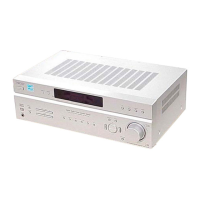


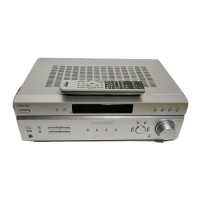

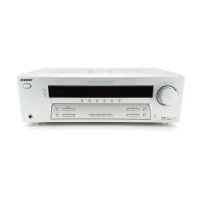



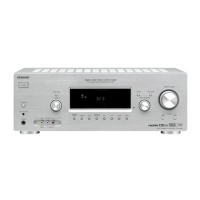
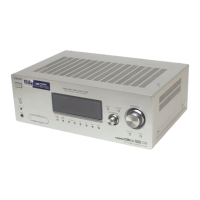

